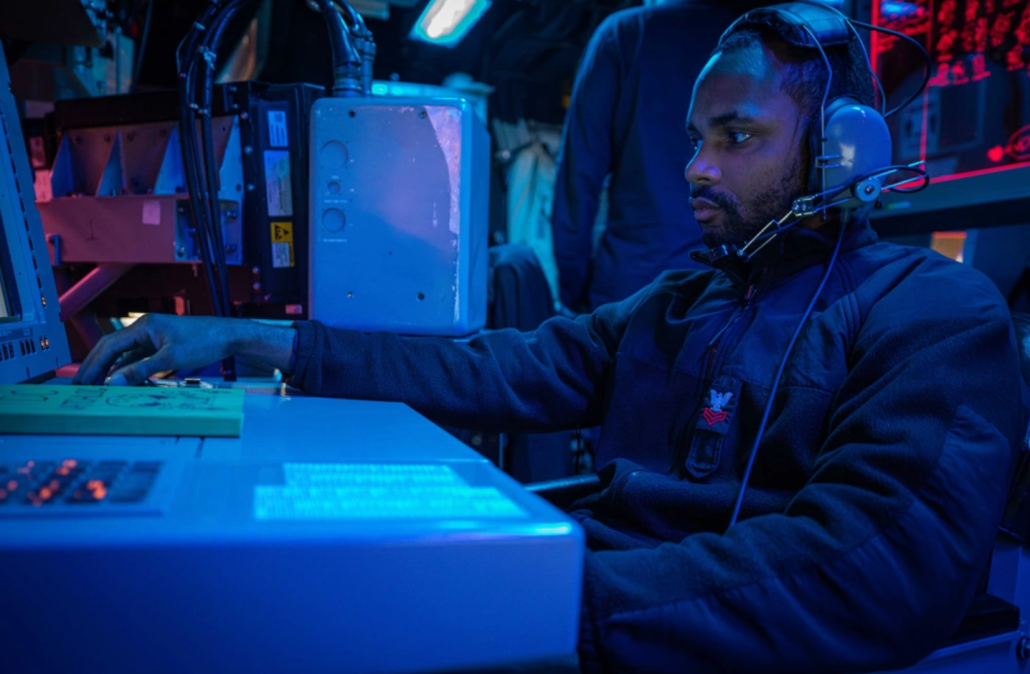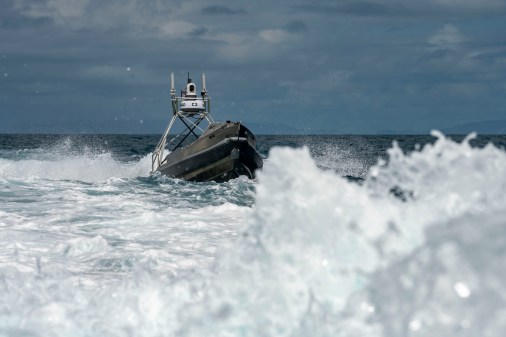Navy develops blueprint for information environment systems

SAN DIEGO, Calif. — The Navy has developed a blueprint to help guide design goals and reference architectures as it seeks to modernize its information systems for the future.
Published in the past year, the Information Environment Ecosystem Blueprint, developed by the Navy’s office of the deputy chief of naval operations for information warfare, documents the reference architecture to move from a host of interconnected systems to a capability platform model.
“With our information ecosystem blueprint, we’ve we have highlighted that reference model that we want to align to, so that we can seamlessly employ from our ashore and our afloat-based platforms,” Jennifer Edgin, assistant deputy chief of naval operations for information warfare (N2N6B), said Thursday at the annual WEST conference.
Edgin has experience developing blueprints for modernization, having been behind the Marine Corps Information Environment Enterprise — a blueprint serving as a unified technical, physical and business model to document the design of the Marine Corps Information Environment.
“In prior experiences with the Marine Corps and then coming to the Navy side, when you talk to the sailors, when you talk to the providers, you can see there’s some slight disconnects … You hear sailors tried to make two systems talk to each other or doing swivel chair operations to share data. We can do better,” she told DefenseScoop in an interview at the conference. “The idea of the blueprint was really born out of that user frustration. It’s really provided us an opportunity to get really right with our vision of the future.”
The blueprint also helps break down language barriers between technical folks and the actual users.
Edgin equated the need for the blueprint to guide modernization to any construction project trying to build or remodel something.
“Let me ask the audience this: How many of you have ever remodeled a bathroom, built a house, by a show of hands? Yeah, everybody … Did you just hire framers, plumbers, roofers, tile folks and say, ‘Come in and do the job?’ No. That’s a really costly way to do business. It’s also not all that effective,” she said at the conference.
So too is the case for the Navy as it seeks to improve the way its systems are architected with the ultimate goal of improving communications and data flows for a distributed force to sense and make decisions faster than the adversary.
Edgin told DefenseScoop that the blueprint applies to both new systems and architectures as well as existing systems and networks.
“If we look at the platform-centered Navy, we have big capital investments in ships and submarines and aircraft and also our ashore-based facilities. This isn’t a new blueprint for a new house, this is a blueprint for the update and remodel,” she said. “That requires us to take a fresh look at some programs, maybe invest in some new things, but also bring some of our existing things up to date.”
The plan is an iterative process that will eventually be updated, likely in the next 18 months or so.
The first iteration hones in on a few priority areas. The first is zero trust and discerning what the zero-trust principle means for the entire ecosystem.
The next is baking in cybersecurity upfront in systems rather than bolting it on after.
Additionally, Edgin said they wanted to move away from system-centered thinking to capability and services-centered thinking.
Moreover, the blueprint will help the Navy understand what it needs, and in many cases, more importantly, what it doesn’t.
“We’re using our blueprint to continue to unite our capabilities and we’re constantly using it to assess our business and mission value. Oftentimes, we can get enamored with technology,” she said. “We’re really great at identifying technology. We’re really bad at divesting of old things and switching things out. This blueprint is helping us create a comprehensive business and mission model leading to what we hope will be a set of return on investment metrics. This is our long-term journey.”
The plan also will help develop a common type language or architecture with the Department of Defense, other services and even partner nations in line with the Pentagon’s top modernization effort dubbed Combined Joint All-Domain Command and Control (CJADC2).
That plan essentially envisions how systems across the entire battlespace from all the services and partners are networked and connected to provide the right data to commanders for better and faster decision-making. The “C” refers to the importance of integrating international partners from the beginning of that plan as well.
“One of the things that the blueprint is, it’s a reference architecture. In the department, we’re really good at solutions architecture and really microsystems architecture. Then we kind of try to piece it together like a jigsaw puzzle,” Edgin told DefenseScoop. “What the blueprint does is say, ‘Okay, here’s how it all comes together’ and then that from there, we can derive specific solutions and systems architectures. Where this comes in from something like CJADC2, they also have a reference architecture. So we can pull up alongside the side [of] those efforts, whether it be CJADC2, an ally or a partner or another service and say, ‘Okay, this is what we look like, this is how we’re aligned to use technology to support our mission threads. How do you look?’”
Ultimately, the plan takes the Navy — and the U.S. military writ large — from trying to make one system talk to another, up to the next level to achieve true integration, she added.






